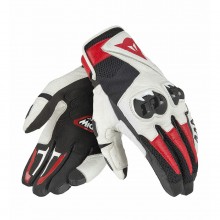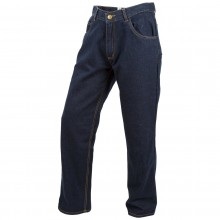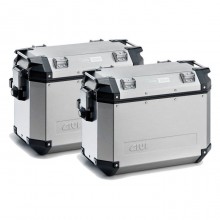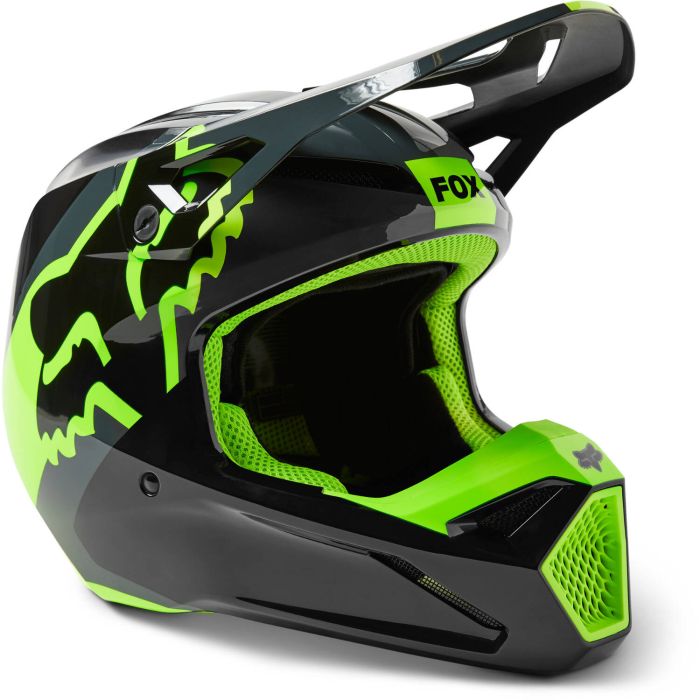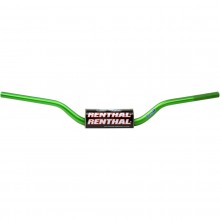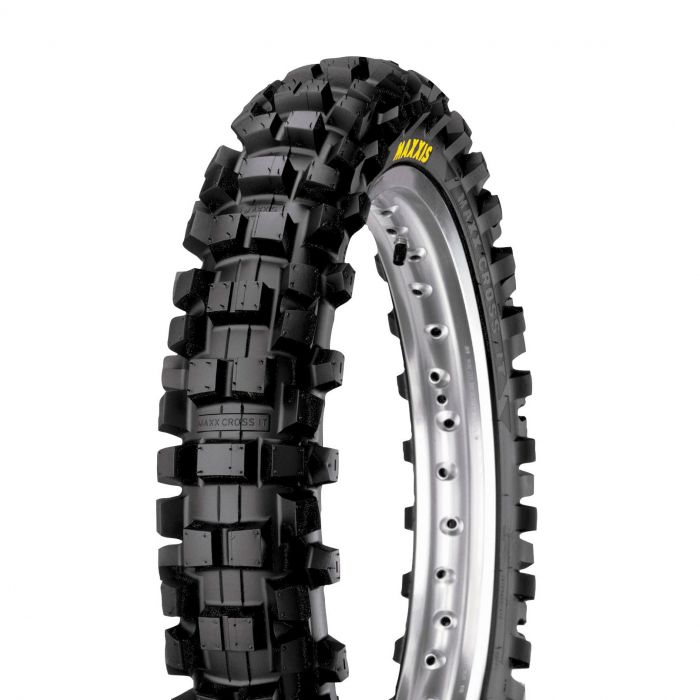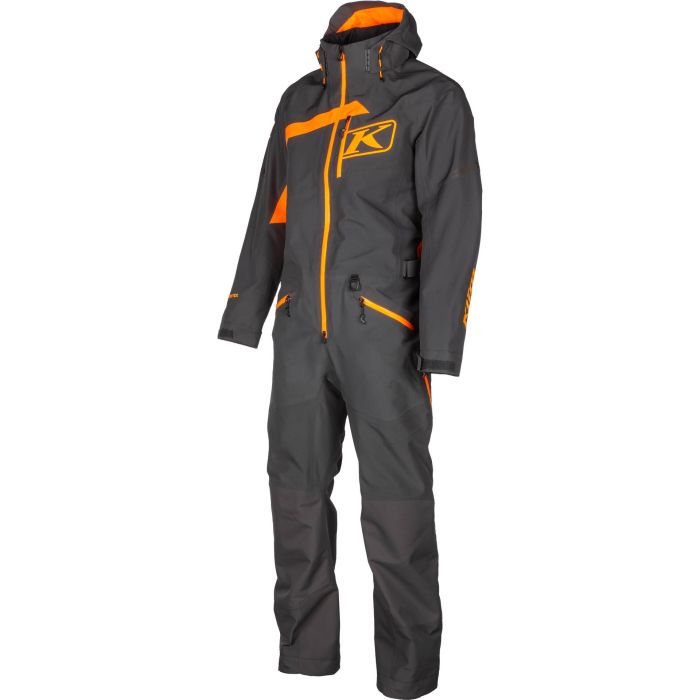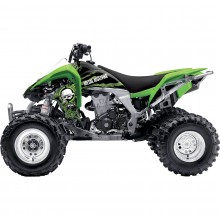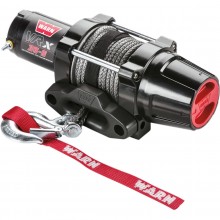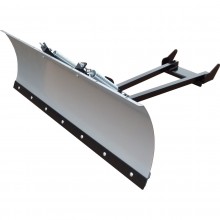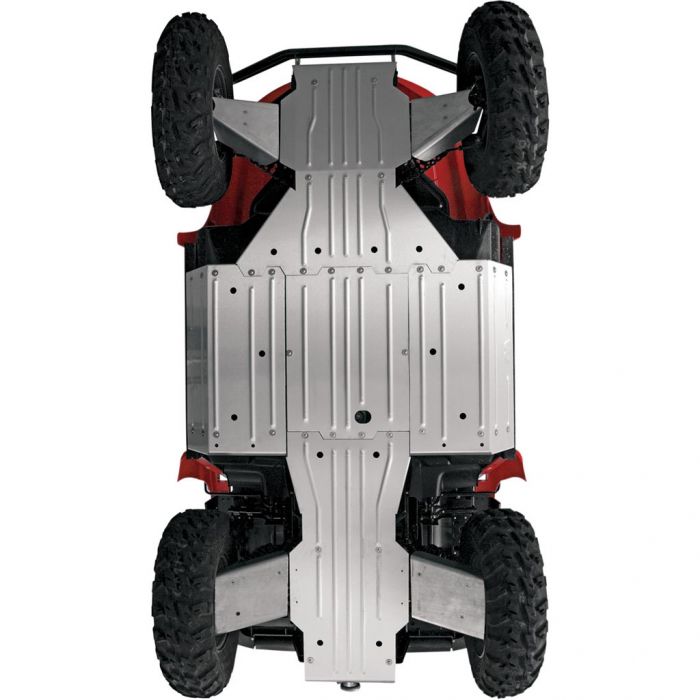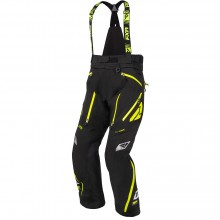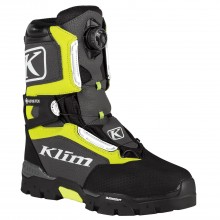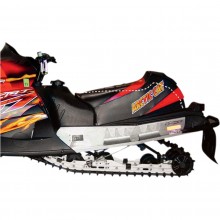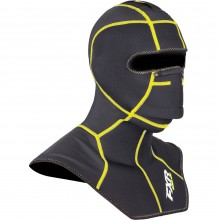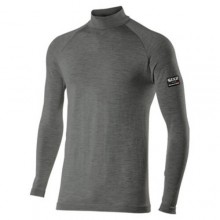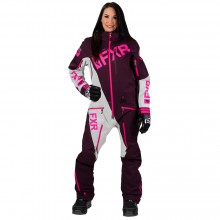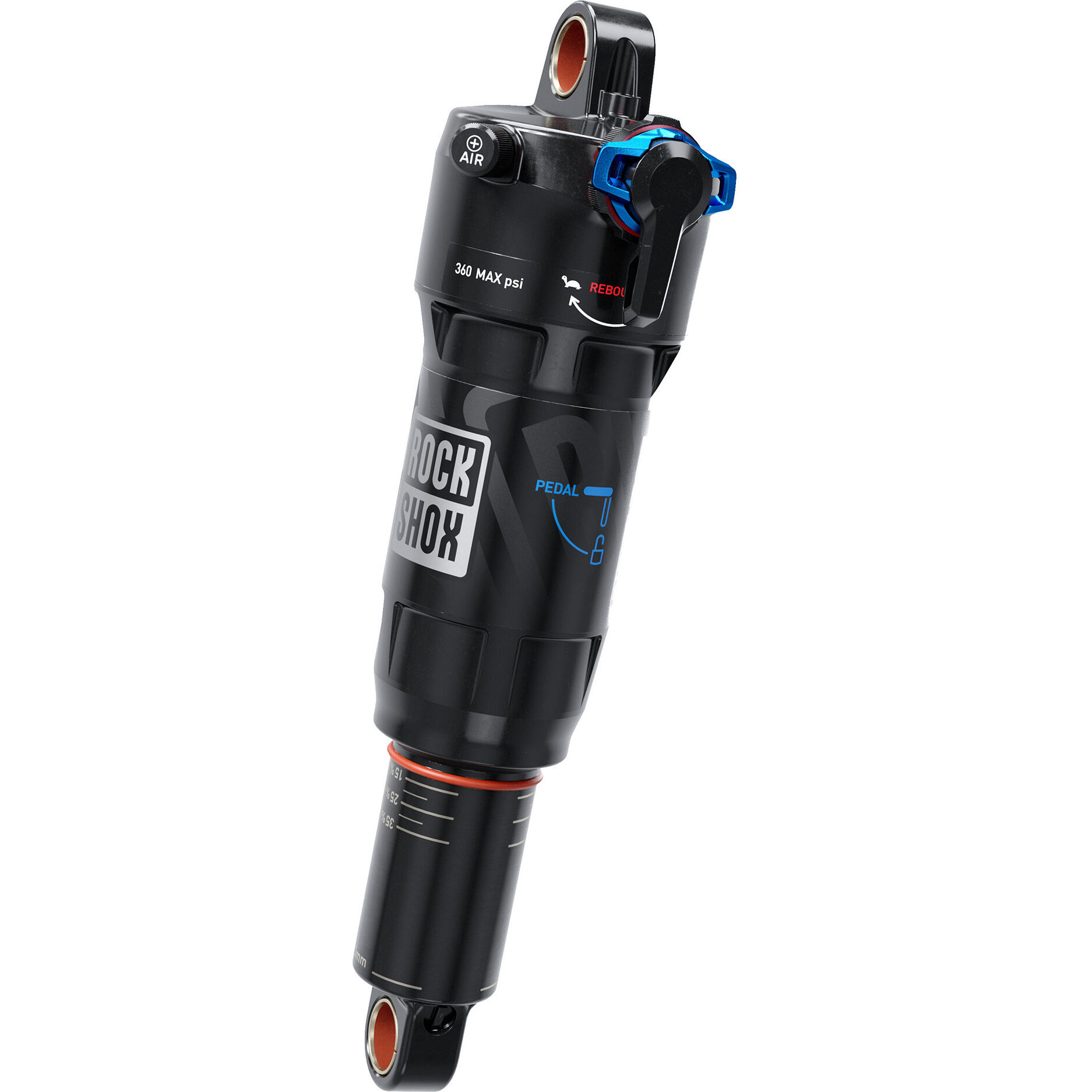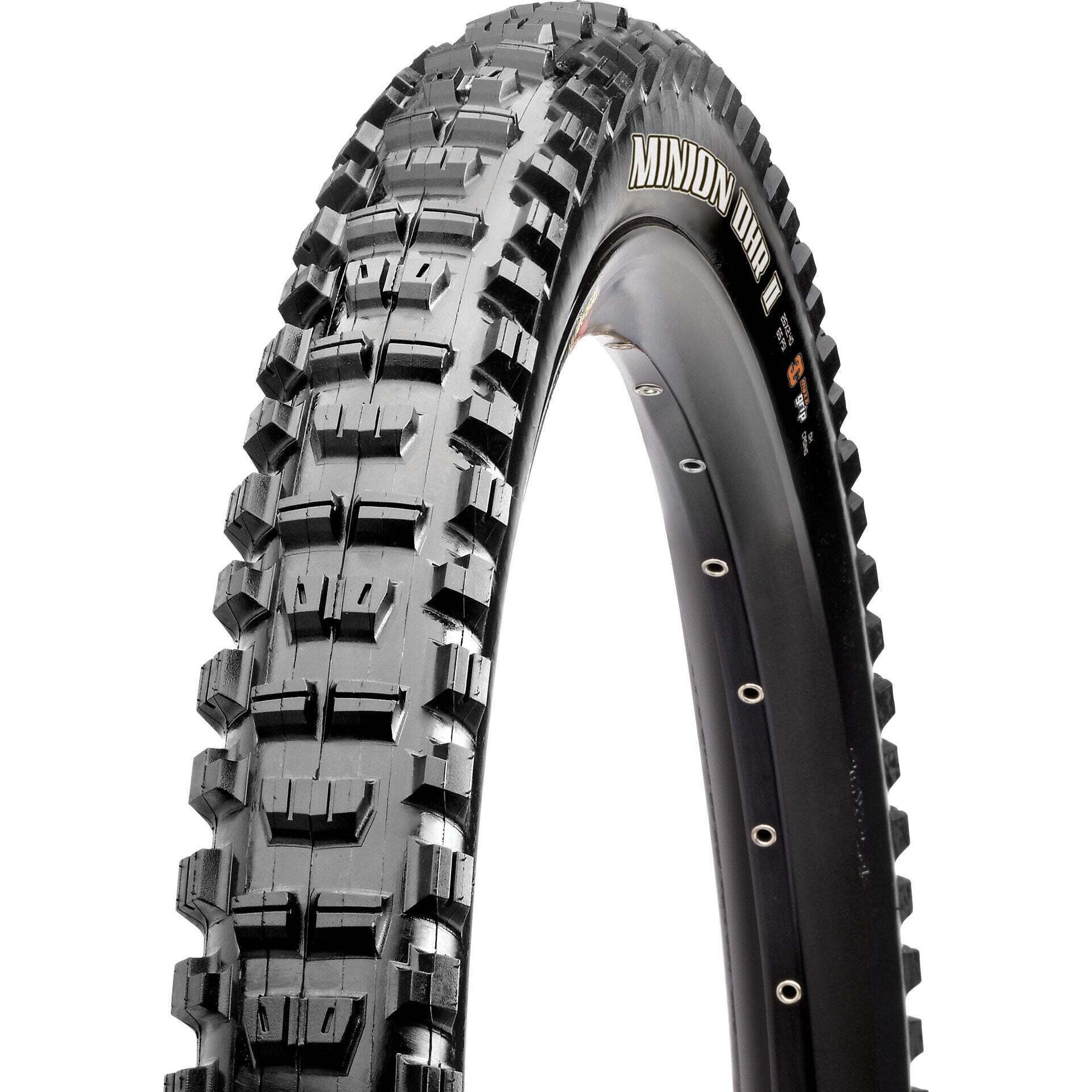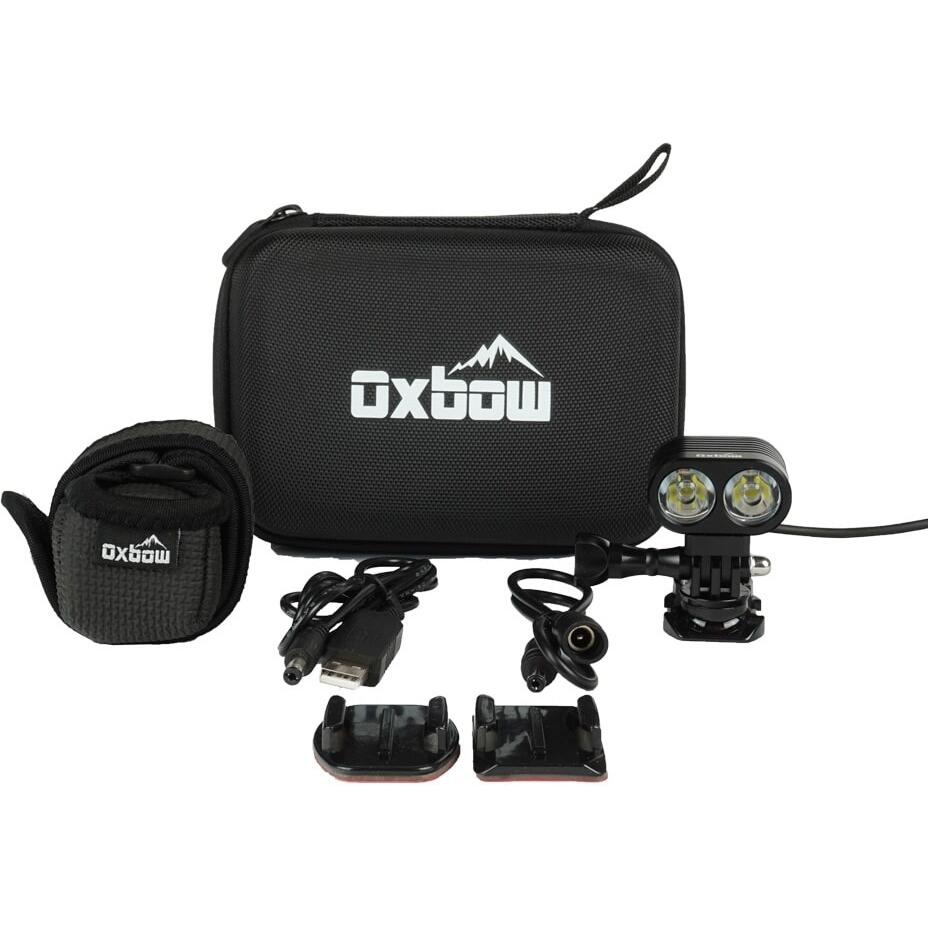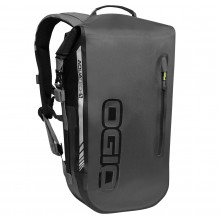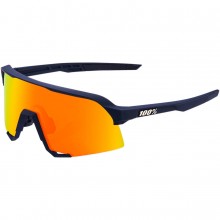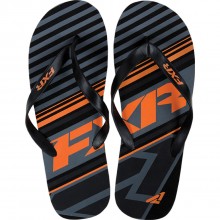
Dictionary of Common Motorcycle Terms
In the world of motorcycling, certain terms or expressions can lead to some confusion. Have no fear, F9 Wiki is here with a catalog of some commonly used lingo… plus some comments from the peanut gallery.
Shop Now
Jan 1, 2023 — Motorcycling is a world in and of itself; it's an activity which is practiced, but also talked about. The terms it uses are weaved into a web of meaning at times familiar, at times obscure. But it shouldn't remain that way. Part of the fun of being a motorcyclist is learning how to communicate and connect with others who share the same passion.
So, without further ado, let's take a crack at demystifying some common motorcycle terms and slang. Seeing as we can't possibly mention everything, drop us a line with your definitions and we'll be sure to keep the list growing!
Aa
Air-cooled: Engines that utilize cooling fins or fans to dissipate excess heat. This keeps the engine within operating temperatures... cause not blowing up is a great thing.
Apes: Also known as Ape-Hangers, these are high handlebars which often raise the arm position over the rider’s shoulders, making them look downright silly at times, and downright cool if they're Easy Rider, or someone committed to building their trap muscles (respect).
Apex: The center or tightest point of a curve. It is common to hear this term in race-talk, or on the Discovery Channel's Big Cats series. Typically, a rider opens the throttle at the apex, just before hitting it… or the pavement.
Bb
Balancer: A chain or gear-driven shaft with an off-set counterweight that cancels vibration generated by the action of the engine (there should be a fricking dictionary for most of the terms used in this sentence; if it's missing here, Google it daddy-o). Also called a counter-balancer, just to make it more confusing.
Bearing: Circular supporting part designed to accept the wear and punishment of moving parts while protecting more valuable parts. The 3 types of bearings are roller ball, tapered and metal collar cap, though some may add fidget spinners to this category. Wheel bearings can be both roller and tapered types.
Bias-Ply: A bias-ply or bias tire isn't some fancy legal term, it consists of multiple rubber plies overlapping each other. This overlapped pile of lies... OBJECTION.... I mean plies, forms a thick layer that is less flexible and more sensitive to overheating. Typically great for handling larger loads (yeah, I went there), and optimal for highway use. Like these bad boys:
Big Twin: Any large sized V-Twin motorcycle engine (see V-Twin definition). Also slang for engine in the larger Harley-Davidson bikes.
Bleeding: Letting unwanted air out of a hydraulic brake or oil system. Typically, a pneumatic vacuum tool will be used to do this by sucking the air and fluid out. At the same time, the mechanic or your buddy Jimbo will be adding new fluid to the bike to ensure that there are no air bubbles.
Bobber: A stripped bike with shortened fenders. They are older than choppers, and were very prominent during WWII. Think Steve McQueen’s stunt double — let's call him Bob — performing that crazy jump in The Great Escape. Bob's your uncle.
Bore: The interior diameter of a cylinder. That’s pretty much it, such a bore, am I right?
Bushing: A removable liner for a bearing. Kind of like bearing lingerie.
Cc
Café Racer: Motorcycles modified to resemble racing motorcycles from the 1950's and 1960's. They are called café racers because their owner supposedly raced from café to café in London, where the bikes first appeared. He died shortly after of a caffeine overdose. When coffee leads to coffin.
Caliper: Non-rotating components of a disc brake that straddles the disc and contains the hydraulic components. Also, tools for measuring inside and outside distances and thickness. If you live in Québec, you might sometimes hear it pronounced in French as "gallipère" or "L'câlisse de gallipère."
Camshaft: The shaft carrying the cams (rotational mechanical devices) which open and close the valves in a four-stroke engine. Ohhh, shafted.
Carb: A mechanical device found on the intake side of the engine which mixes fuel and air to create the volatile mixture that gets ignited in the engine. Basically, a bomb.
CC/Displacement: The size of an engine, in cubic centimeters (cc) or cubic inches (ci). Also refers to the volume through which the piston travels during a single stroke of an engine. This term is sometimes used for the total volume displaced by all engine pistons. The displacement is measured in cubic centimeters (ccm). Here’s the formula for displacement, cause I’m such a nerd and I can’t pass up the occasion to mention Pi:
displacement = π ( 1/2 × bore )^2 × stroke × ncylinders
CDI: Stands for Capacitive Discharge Ignition. Fancy, right? It’s a black rectangle spouting wires under the seat that stores and releases energy instantaneously. This is ideal for an ignition circuit.
Choke: Like Darth Vader, it's a device whose sole purpose is to restrict air, but in this case it has an added benefit of enriching the fuel mixture with more gasoline.
Chopper: A lightweight custom motorcycle that typically has an extended front end, paired with radical styling. The word originates from the post WW2 era when former GIs were looking for performance mods. There was no aftermarket back then and once all engine mods were out of the way the bike's weight needed to be reduced. Owners began to remove unnecessary components and eventually began to cut away (or chop) sections of the bike and frame. Used to be called "bobbing" but the word "chop" became the more popular term. Violence always wins?
Cogs: This is just slang for the gears in the transmission. Also, "Wild Cogs" could be the upcoming sequel to the movie "Wild Hogs," given that latter's performance at the box office.
Counter-steering: The act of turning the bike's handlebars in one direction (at speeds typically over 20km/h) and having it go in the opposite direction. This occurs naturally when the bike is over a certain speed, due to the gyroscopic effect. Science!
Crankshaft: Rotating part of engine to which connecting rods are attached. This converts "cranks" (the up/down motion of the pistons) to rotational motion.
CV: Stands for Constant Velocity, a later version of carburetor design and also may refer to a type mechanical joint in a drive system. For example, front-wheel drive axles are built with CV joints. These joints make it possible for the transmission to drive the front wheels smoothly and reliably, by permitting a range of motion through the use of bearings. In short, CV axles make angular movement possible. They are to ATVs what Cirque du Soleil is to Las Vegas nightly entertainment.
Dd
DOT: U.S. Department of Transportation federal helmet safety performance standard (formally FMVSS 218) for road-going helmets. Turns out this standard is pretty lax, seeing as manufacturers are able to do their own, often incomplete form of testing.
Anyway, I like to call it Death On Time, but it can also refer to the manufacturing date of tires for instance. A tire DOT code (for example, 1221) will indicate the week and year the tire was manufactured.
Drag Bars: A straight handlebar that does not sweep up from the risers. I can't stress this enough: they’re low, flat, straight handlebars, and don’t you dare try to convince them otherwise!
Dresser: Slang for touring bikes. Back when motorcycles pretty much all looked the same, some riders added on windscreens or saddlebags for more comfort and carrying capacity. Bike makers took note and started making such things factory options, allowing buyers to "dress up" their bikes. Today, bikes like the Honda Goldwing and Harley-Davidson Ultra Classic are the standard examples of a dressed-up bike, including things like heated seats, powerful stereos, intercoms, navigation, powered windscreens, cruise control, and soon: space travel.
Ee
ECE: Economic Community Europe. The ECE prefix applies to standards used for testing helmets sold in European markets. Also the root for CE armor used in riding jackets. ECE 22.05 refers to the CE standard that applies to motorcycle helmets.
EC to remember?
ECU: Engine Control Unit, also called an Engine Control Module (ECM), which is a type of unit that controls a series of actuators on an internal combustion engine to ensure optimal performance. It does this by reading values from a multitude of sensors within the engine bay, interpreting the data using multidimensional performance maps (called lookup tables), and blasting off to hyperspace.
Before ECUs, air–fuel mixture, ignition timing and idle speed were set and dynamically controlled by mechanical and pneumatic means.
EFI: Electronic Fuel Injection. Engines with a manifold injection, and an electronic engine control unit (ECU, see above) are often referred to as engines with electronic fuel injection. Typically, EFI engines have an engine map built into discrete electronic components, such as read-only memory (sounds like a Daft Punk album). This is both more reliable and more precise than a three-dimensional cam.
Enduro: A category for heavier and less aggressive motocross bikes which are tuned and equipped for driving on the road. Also referred to as dual-sport, because they have the ability to play polo and golf at the same time.
Expansion Chamber: An exhaust system for a two-stroke engine that can, when properly designed, increase engine performance. When not properly designed, it actually cuts performance, but still makes a lot of noise. Harley riders, one at a time please!
Ff
Fairing: Bodywork made out of fiberglass, plastic, carbon fiber or other light material intended to improve aerodynamic performance and/or provide some weather protection for the rider. Yeah, cause we totally bought that Hayabusa for the "weather protection."
Filter: A device which, you guessed it, filters out unwanted debris, gunk and dust. In motorcycle terms, it usually refers to either oil or air filters.
Now when someone is talking about filtering, they are referring to something else entirely, AKA the super duper extremely insanely controversial topic of lane splitting. Here, the rider will claim the center line dividing 2 lanes as their own personal motorcycle-reserved lane. When practiced at high speeds: very dangerous. When practiced safely (and legally): avoids the danger of being rear-ended, while pissing off drivers who don't realize that 1 less vehicle on the road actually facilitates their commute.
FIM: The Fédération Internationale de Motocyclisme, basically the golden boy of safety rating systems. The elaborate and strict tests they run are designed to protect their most valuable asset: motorcycle racers. Turns out, FIM-rated helmets benefit everyone... that is to say those who can afford the steep price tag. If you're one of them, congratulations! Your head is about as protected as Fort Knox.
Final Drive: Final drive is simply the last step in the process of transferring engine power to a bike's rear wheel, using the sprockets and chain. Final drive gearing refers to modifications made to the sprocket tooth count & chain length for performance or safety purposes (pretty much never for the latter, unless you drive a Goldwing, but these come geared long from the factory anyway).
Early motorcycles that didn't have a clutch or gearbox drove the rear wheel directly by way of a tensioned leather belt running from the engine's output shaft. Bikes and leather belts? Sounds like we know what inspired every Judas Priest album.
Flathead: V-Twin, produced from 1929–1972. Early head design where the valves resided in the block, so the head only covered the block and held the spark plug. Also called L-Head or side-valve. Probably the coolest bike ever created, but the Shovelhead comes close.
Four-Stroke: A type of engine that has a four-part power cycle: intake on a down stroke, compression on the ensuing upstroke, power on the down stroke and exhaust on the ensuing upstroke. Anything past this and you’ve entered the Twilight Zone.
Gg
Gasket: Simply, a seal between 2 components. Could be made of paper, foamet, metal, rubber, or your nonna’s pasta!
Gearbox: Slang for the transmission housing on a motorcycle, or just a box full of gears depending on how literal you take this.
Gixxer: Slang for Suzuki GSX-R models, basically what you buy when you’re too cool for a Kawasaki Ninja or ZZR.
Hh
Hardtail: A motorcycle with no rear suspension. This idea comes to someone who’s clearly had too much to drink. OK, I'm not gonna lie, it looks pretty sweet — save for the fact that keeping my backside happy is hard to sacrifice.
HP: Short for horsepower, which is a unit of engine power equal to 0,746 kilowatt (kW). Originally, it was developed by James Watt to compare the power of steam engines to the work done by a horse. Contrary to popular belief, 1 horse power is not equal to the force of 1 horse — it’s actually the force necessary to lift 550 foot-pounds in one second.
Hydraulic: A system of transferring force using an incompressible liquid, typically in disc brake and clutch activation systems. Also, the use of fluid to provide damping in suspension or steering systems.
Ii
Inline Four: An inline four cylinder motorcycle (or automotive) engine refers to an engine with four cylinders in a row. It's among the most powerful motors on a motorcycle... still kind of looks like an oversized typewriter though.
Intake: Similar to our pulmonary system, a motorcycle intakes or inhales oxygen, which then goes to the combustion chamber. That's where the party goes down, so to speak. Here, the air is mixed with burning fuel to produce a sick disco beat, known as the internal combustion reaction — AKA explosive power which can then be delivered to the rear wheel via the pistons.
Jj
Jig: A device that holds a piece of work and guides the tools operating on it, like a saw. That's actually where the term jigsaw comes from, #fakehistorylesson.
JIS: Stands for Japanese Industrial Standard, which applies to screws found on many vintage and modern machines. If you've been using a Phillips driver all your life, wondering why you've been stripping screws left and right, for the love of Pete Mary Joseph, JIS STOP!
Sure, hex-head fasteners have replaced JIS screws these days, but it never hurts to have a handy JIS screwdriver in your toolbox. Seriously, get one.
Kk
Kawi: Slang for Kawasaki motorbikes. Not to be confused with Kiwi... slang for a New Zealander.
kN: Force denoted in kilo-newtons. In the motorcycling industry, it is typically used to measure impact transferred to safety gear. For example, manufacturers will brag about how their stuff attenuates x or y kNs transmitted through their armor. How much is absorbed will be a determining factor in what CE Level the armor receives.
Good to kNow!
Ll
Long: Slang (not Schlong) for gearing long, which is the practice of modifying your bike's gear ratio (the relationship between the number of teeth on the front and rear sprockets) so that each gear takes longer to get through. This results in less available torque but can increase mileage and ease the transition between gears.
Low End: Used to describe a motorcycle with more available power (or torque) in the lower end of its gears. Examples include the Yamaha MT-10, Suzuki GSX-R750 and KTM 1290 Super Duke R.
Lug: Letting the RPMs fall a lot lower than the engine's power band (so it has very little acceleration). Also, staying in a gear too high for your engine speed. The engine "lugs", meaning it rattles or bogs, suggesting that you downshift to a gear better suited to your current road speed. No bueno, unless you’re driving Miss Daisy.
A lug can also denote a small screw without a head. Giggity.
Mm
Manifold: Pipes that supply air to the engine's cylinders (intake manifold) and channel engine gases to the exhaust (exhaust manifold).
Master Cylinder: The hydraulic cylinders connected to the brake and clutch levers that send pressure to the brake calipers or clutch slave cylinder to actuate them. Basically, if you don’t have a master cylinder, get life insurance.
Master Link: No, this does not refer to Link obtaining the Master Sword in Zelda, though I do enjoy Breath of the Wild as much as the next gamer. This is the link in the drive chain that permits the chain to be removed for service or replacement.
Nn
Naked/Standard: Who would have thought that the terms naked and standard would go together? They both refer to bikes with little to no fairing coverage. Basically, a motorcycle where you can fully see the engine.
Let the grandpas have their dressers, the kids are driving naked these days. Madness!
Nipple: Not what you think. According to Merriam Webster, it's the very last definition:
The metal threaded ends that are installed on wheel spokes.
Oo
OHC, OHV: Overhead Cam, which is a piston engine where the camshaft is located in the cylinder head above the combustion chamber. This contrasts with earlier overhead valve engines (OHV), where the camshaft is located below the combustion chamber in the engine block. Chances are you will never come across these terms again, but thanks anyway Wikipedia.
O-Ring, X-Ring: A rubber sealing part, commonly found on motorcycle chains and designed to retain lubricant and repel dirt. Does not need to be in the shape of an O; it could be in the shape of an X or Z for instance. If it can designate an airport code, chances are it’s also a seal.
Overdrive: Transmission gear such that 1 revolution of the engine produces more than 1 revolution of the driveshaft. Overdrive allows the engine to operate at a lower RPM for a given speed, notably at higher speeds, which will lead to better fuel consumption, lower noise, and lower wear. Quite boring compared to this term’s more frequent use in rock’n’roll and pop culture.
Pp
Pads: The thin blocks that grip the brake disc and stop the bike. Now go forth, young padawans.
Panhead: Slang for the Harley-Davidson engine produced between 1948 and 1965. Named after the valve covers that look like small turkey roasting pans.
Pannier: One of a pair of packs or baskets hung on the side of a vehicle. You may also hear the following exotic pronunciation: "paneer" — which is very confusing if you happen to find yourself at an Indian restaurant.
Petcock: A pet rooster. Also, an ultra-sophisticated fuel valve with impressive features such as ON… and OFF.
Pillion: Motorcycle passenger or passenger seat. Usually refers to the latter, because how would you feel if you were a passenger, and you were called a "pillion?"
Pilot Jet: The jet in a carburetor that regulates fuel flow at low speed. Ground control to Major Tom.
Piston: The slugs moving up and down within the engine cylinders. They are responsible for turning the engine's combustion into kinetic energy.
Plugs: Slang for spark plugs. These are devices that fire the electric spark which ignites the mixture in an internal combustion engine.
Power Band: Range of RPM where an engine produces the most power.
PPI: Pores Per Inch, 'round here we call it Popeye. It's the unit of measurement for foam sheets, commonly used for air filters. It measures the number of cells in the foam per inch.
A lower PPI would indicate that the filter foam is breathable with larger cells, whereas a higher PPI would indicate a dense foam with little airflow. PPI ranges are 10 to 80, and common motorcycle/dirt universal filter foam is in the 30-60 range.
Primary Drive: The ratio between the crankshaft and the gearbox. Unlike the final drive (sprocket modification), this ratio cannot easily be modified.
PSI: Pounds per Square Inch. An example would be used in tire inflation. 1 psi is approximately equal to 6895 n/m^2, which goes to show you what a sissy 1 Newton per square meter of force is.
Puck: Unlike the hockey puck, this is a part that actually serves the purpose of safety. Pucks are parts of body armor worn by the rider that attach to the side of the knee and touch the ground while cornering. They are also known as slider pucks, which are installed on the sides of a motorcycle to protect the engine and other components during a lowside crash.
Quad: Not a motorcycle term strictly speaking, though it's used by many a biker to refer to ATVs or UTVs.
Quadrophenia: A classic 70s biker movie with a killer soundtrack based on the rock opera by The Who with the same title. It's about teen angst, disillusioned youth, and forging one's identity moving through a crude yet exciting landscape. Would most definitely recommend.
Rr
Radial: The tire construction utilizing plies that run from the left side of the tire to the right side, from bead to bead under the tread. Typically recommended for better cornering traction, seeing as radial tires will have softer sidewalls. How rad!
Raised Tranny: Harley bikers would use a spacer to raise the transmission on their bikes, usually when riding in dirt to keep the primary cover away from anything that might knock into it.
Rake: Slope of the front forks. Massively stretched out in the case of custom choppers so as to provide us with great bloopers of riders dropping their bikes in parking lots.
Rearsets: Foot controls that have been relocated, typically to a customized position further back from stock. They are used for better ground clearance, added comfort, and for your passenger to operate your rear brake and shifter when you’re feeling lazy…
Rectifier: A component that converts alternating current into direct current. ACDC’s band name inspiration is basically a rectifier.
Regulator: A device in an electrical system that maintains voltage. Not as cool as a rectifier, but necessary nonetheless.
Rev Limiter: This is a system that steps in to prevent engine damage due to exceeding the safe limit of engine speed past the red line. It acts to keep engine RPM at or below said red line by cutting ignition to one or more cylinders when the red line is exceeded, thereby limiting the revolutions per minute.
Older bikes are not so fortunate as to have these fancy limiters. When taken beyond the red line, they run the risk of becoming shrapnel.
Riser: A device used to increase the height of the mounting point of the handlebar above the top triple clamp. It can sometimes, or even often, be exaggerated in height for no other purpose than cool points.
Rocker Arm: A lever that transfers force from a pushrod or camshaft to open and close the intake and exhaust valves. The "rocker box" is the casing atop the engine that contains the rockers (Hendrix, Cobain, Joplin, etc.).
RPM: Revolutions Per Minute, also called "Revs". It denotes how fast the pistons in an engine are moving... or how quickly Anthony from RevZilla can get through a sentence.
Ss
SAE: Society of Automotive Engineers. Safety standard stamped and associated with a variety of parts. Also refers to a type of connector used for charging and maintaining a vehicle battery. No joke to be found here, the society of automotive engineers is SAErious business.
Shaft Drive: An alternative to chain or belt drive used to transfer power to the rear wheel. Shaft drive requires the least amount of maintenance, but it weighs a ton. And on some bikes, there is a notable elevation effect when accelerating.
Shock Absorber: A rear suspension unit, consisting of a coil spring with a hydraulic damping system. Some systems have mechanisms to increase spring tension (preload), damping action, and some may be air-adjustable.
"Shock" is the more common term, but may also refer to your reaction when you see the price on some of these. Hey, if you want Ohlins, you go All-In.
Shovelhead: Nickname for the cylinder head configuration used on Harley-Davidson V-twins from 1966 to late 1983, when the Evolution or "Blockhead" motor was phased in. So-named because the rocker covers resembled a shovel. I dunno, they look more like u-shaped jerry cans to me.
Slip-Ons: Aftermarket mufflers that slip on (lube required of course) to the factory exhaust header rather than replacing the entire exhaust system. This is usually more cost-effective than a complete system, but it doesn't maximize the potential weight savings or power gains of a complete system tuned appropriately.
Slider: The lower, moving portion of forks. In older fork designs, the slider — coined by me as the fork leg’s pantyhose — typically slides up over the top part of the fork leg. In "inverted fork" designs, the larger diameter is on top and the smaller diameter portion of the fork leg slides up into it.
This term may also refer to a chain slider or chain guide, used to feed the chain onto the sprocket.
Snell: Sounds like a pretentious name for a snail. Also, German for "fast." But it’s actually an organization devoted to safety that tests helmets against a set of objective standards for performance. Snell certification is voluntary on the part of the helmet manufacturer, and is mandatory to have slapped on your helmet at most race tracks.
Spokes: A rod that connects the hub and rim on a wheel. Or: "those little spiky thingies installed on rims." This is the tell-tale sign that your tire requires an inner tube.
Sportster: The "entry level" Harley-Davidson (before the Street line appeared). Sportsters began production in 1957 as a lightweight speed machine and have been in HD’s lineup since. While they are smaller than the full-size or "big-inch" (yeah, they actually call them that) Harleys, they aren’t exactly small, with the smallest Sportster model coming in at 883cc. There is also a 1200cc version, and 883cc bikes can be up-converted to 1200cc pretty easily.
Sportsters are (relatively) light, lean, and fast for a Harley, and are great for cruising in the city, though so are many Honda and Yamaha street models, and they won’t hurt your wallet as much.
Sprung Hub: An older rear suspension design with the spring located in the rear wheel hub. Rocky roads? Your backside will not thank you if you’re riding a sprung hub bike.
Stator: Not to be confused with a starter, a stator is a component of the electrical system that, when combined with a rotating magnet, creates AC current. That current travels along fairly heavy gauge wire through the case and into the rectifier/regulator, which converts it to DC power, and at a consistent output.
Swingarm: The rear portion of a bike that the rear wheel mounts to. It's a pivoting structure that moves up and down with the rear suspension. Motorcycle stands have also been taking advantage of swingarms for years, using paddles to hoist up the rear wheel. They say you're not a real home mechanic if you haven't tried this yet.
Tt
Tachometer: An instrument gauge that displays how fast the engine is spinning in revolutions per minute. Commonly shortened to "tach," and not to be confused with an hour meter.
Also, please do not call this a taco meter.
Tappet: Sometimes referred to as a cam follower, it rolls along the cam face, converting cam lift to linear motion in order to open and close intake and exhaust valves. Setting the clearances correctly is the key to quiet valve train operation.
Torque: The rotational force produced by the engine, often expressed in foot-pounds, and multiplied by RPM. It defines the horsepower output. It is also commonly used in slang to refer to a bike that accelerates quickly at lower speeds. People will use the term freely so as to sound like they fully understand the studies of Archimedes.
Top End: Not Top Gun. It’s the maximum speed of a motorcycle, Maverick. Also, the upper part of the engine, which contains the pistons, cylinders, valve gear, and the induction system.
Transmission: The system of gears and chains by which power is transmitted from the engine to the wheel. Also, an excellent song by Joy Division.
Trials: Competition over radical and rough terrain that often requires difficult stunts. Trials motorcycles are designed to be extremely light, minimalist off-road beasts with low gear ratios, high ground clearance and a control layout ideal for a standing rider.
Triple Clamp, Triple Tree or Yoke: The pair of y-shaped brackets into which the fork legs are mounted with the steering head pivot point in the middle. It’s just a fancy name for the top portion of the forks. Yoke is mostly used in the UK, while Triple Clamp and Triple Tree are like Soda and Pop: interchangeable. Which word you use depends on what area of North America you’re from.
Turbocharger: A turbo is a turbine-driven device that forces compressed air from the exhaust to the combustion chamber. The boost kicks in at a given RPM, sending riders to warp speed.
Turning Radius: Literally the radius (or diameter) of a turn, or the space required to turn a particular vehicle.
Twin Cam: An engine with 2 camshafts for a bank of cylinders. Twin cam, or "TC," may also refer to a V-twin engine design introduced in 1999 by Harley-Davidson. Twin cam "B," or counter-balanced engines, followed in 2000 — cause Harley just likes naming things in the most confusing way possible.
Two-Stroke: An engine design where intake, compression, ignition and exhaust all occur on every revolution of the engine. This allows for more torque at a lower RPM. Pair this with the fact that these are lightweight and you’ll have a great time. Just don’t put a new rider on one of these.
Two-Up: Carrying a passenger on your bike. Not with your arms, just behind you. Also designates a seat kit which contains both the driver and passenger seats.
Uu
UJM: Universal Japanese Motorcycle. Term given to Japanese motorcycles from the 80's, because visually they all looked alike (discrimination much?): an air cooled 550–750 inline-4 with straight tank and seat. Until you were close enough to read the tank emblems, they looked identical.
Vv
Valve: They’re mechanical devices that open, and close. That’s about it. For those who care, they let fuel charges in and exhaust gasses out.
VIN: Not a German or Transylvanian saying "win." A vehicle identification number (also called a chassis number or frame number) is a unique code, including a serial number, used by the automotive industry to identify individual motor vehicles, towed vehicles, motorcycles, scooters and mopeds.
Sounds exciting — however, the only VIN you'll consistently find in the Fast & Furious series is the one ending in Diesel.
Viscosity: Measurement of the thickness of a fluid. In the case of motor oil, a different type of viscosity (for example,10w40, 5w50) will be recommended based on the engine, so be sure to refer to your owner’s manual.
Ww
Water Pump: According to the tenets of Zen philosophy, a water pump is a water pump.
Wave: Also called "The Motorcycle Wave" or "The Low Peace Sign" in North America. Arm pointed downward and at a 45 degree angle, fingers extended to form a peace sign. It's a sign of mutual respect, and a way to wish someone safe travels.
Just don’t get caught waving this way to a cyclist, some might gasp in disbelief!
Wet Clutch: A wet clutch transfers power through mechanical and fluid couplings by mating rotating friction plates immersed in lubricant. If motorcycles had a Durex or Trojan commercial, it would revolve around this subject.
Wheelbase: Measurement from the center of the front wheel to the center of the rear wheel. Pretty basic.
Wrist Pin: The rod or tube running through a piston that also runs through the top of the connecting rod. Also known as a gudgeon pin, a term I had no idea existed.
Xx
X Trap: Ever get this weird feeling that something bad might happen when crossing a railroad track? Turns out, an x trap is exactly this fear realized, and it specifically refers to the location where road and track meet, creating a slit. Sometimes, thin motorcycle tires traveling at low speeds can get caught in it, resulting in an embarrassing tumble at best, or your bike being totaled by a train at worst.
Yy
Yamaharley: Slang for Japanese motorcycles resembling a Harley-Davidson, like the Yamaha V-Star or the Kawasaki Vulcan. Though I bet Harley riders just call them Yamaha-ha-ha's.
Zz
Z-bars: Ah, we’ve finally arrived at the Zs. And if you’re not already ZZZ’ing, this is a set of tallish, angled handlebars, usually found on a chopper or cruiser. You’ll know them when you see them.
Zorst: Slang for exhaust, though I have yet to hear it spoken. The day shall come!
Woah, this is likely our longest article yet, and it's sure to get longer as definitions keep getting added. In any case, it's meant to serve as a quick-lookup if ever things get confusing. See you later, alligator!
Related Articles
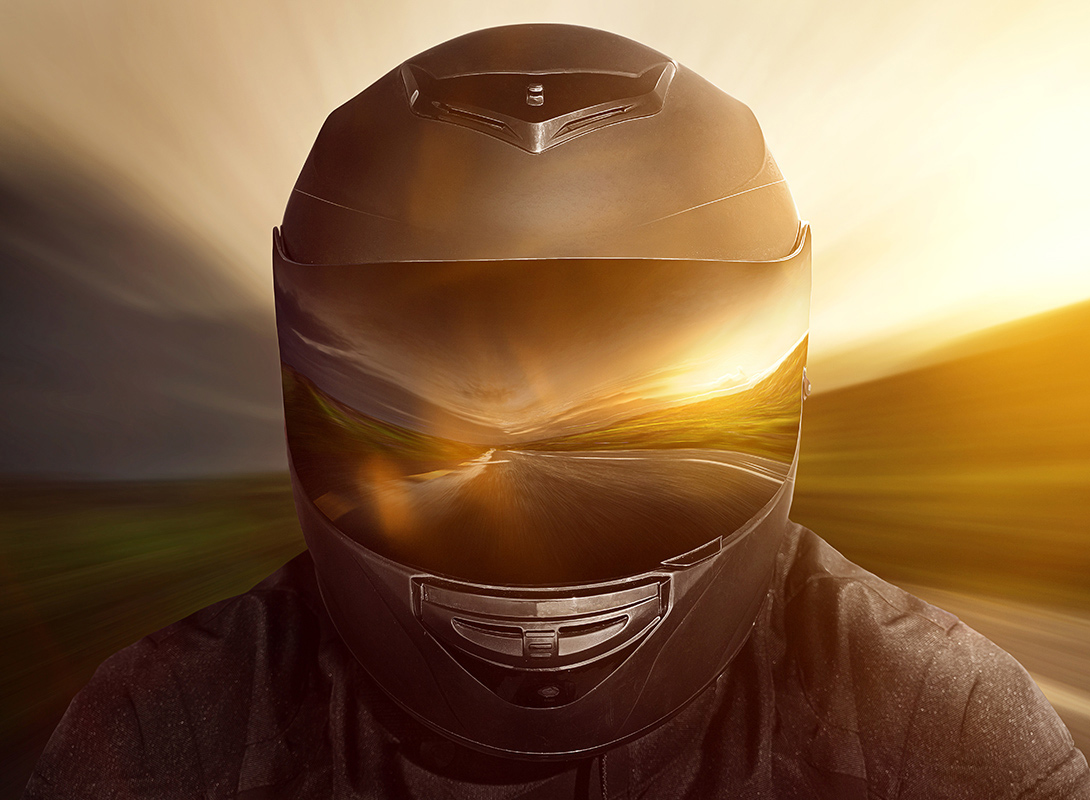
The Cost of Motorcycle Helmets: Cheap vs Expensive
How much should you really pay for a motorcycle helmet?

The Nod, the Twitch, and Other Things Only Riders Do
Our common struggles as motorcyclists unite us with something as simple as a wave.

Beginner's Guide to Motorcycle Gear
Gearing up safely doesn't have to bust the bank. Here are our top picks for beginner riders.



